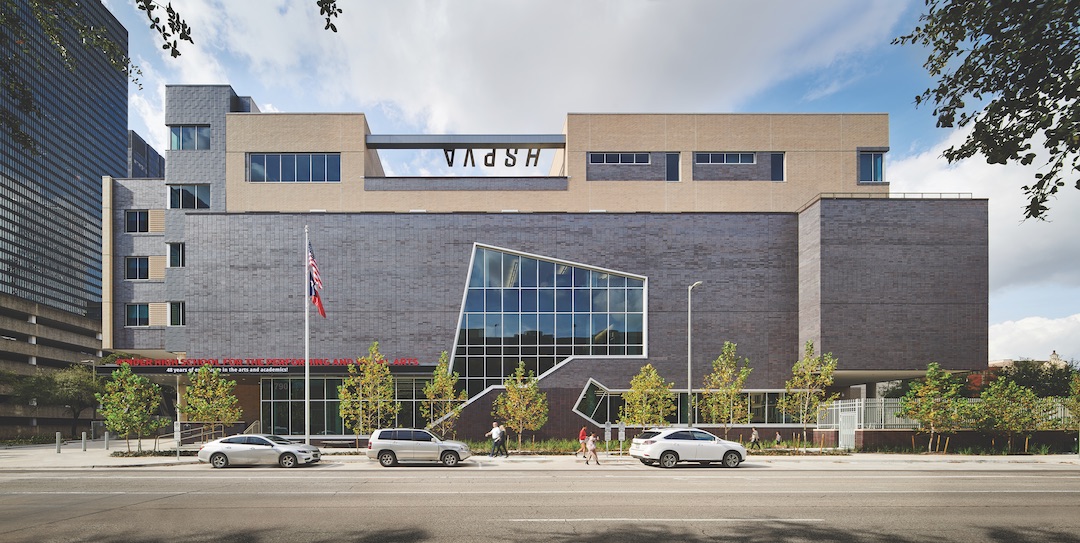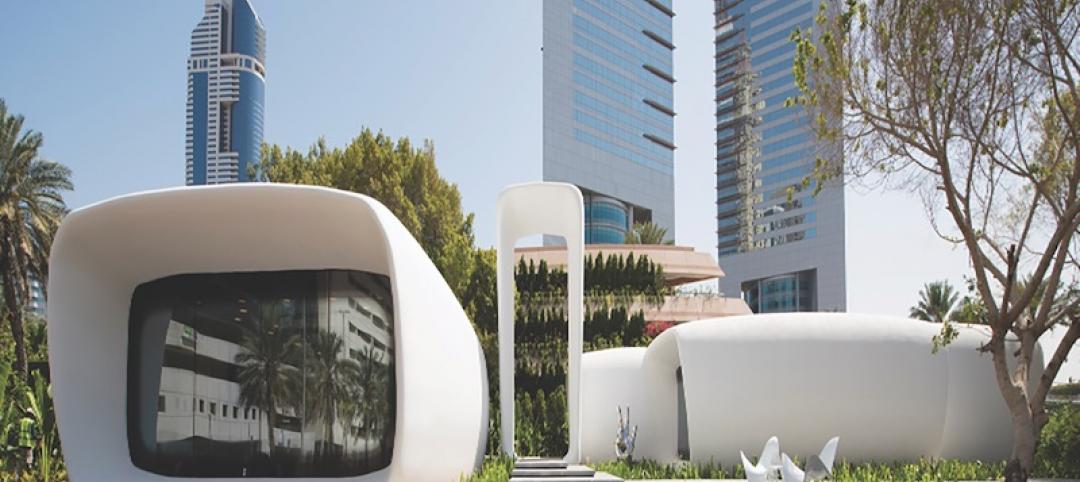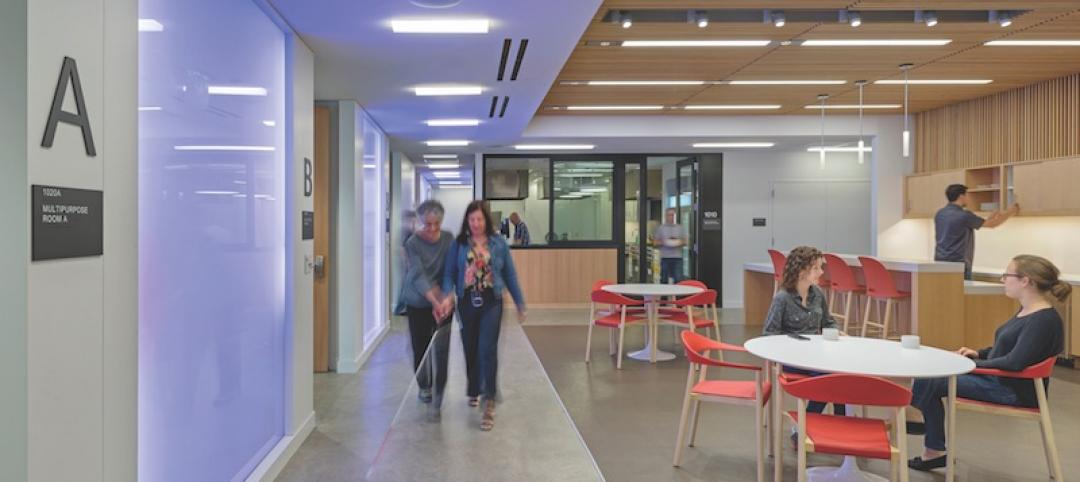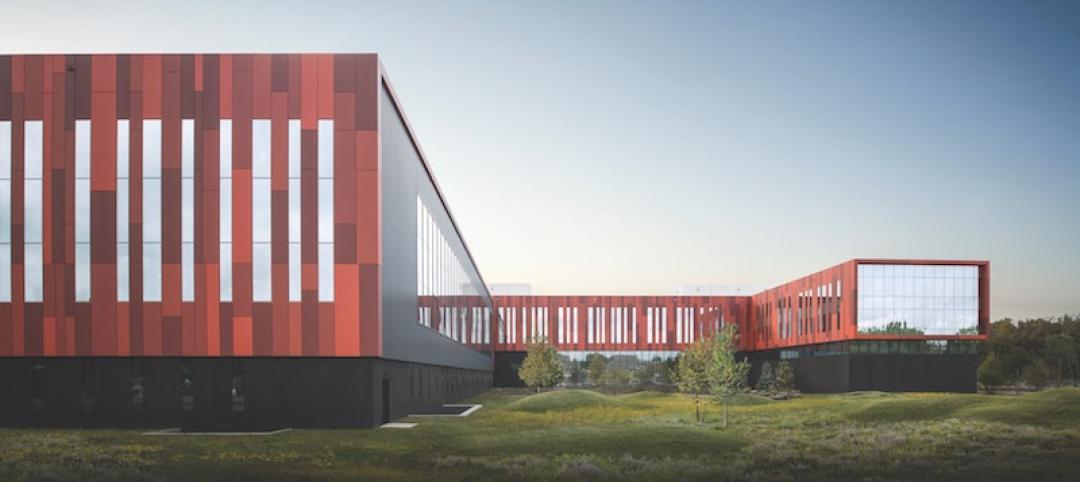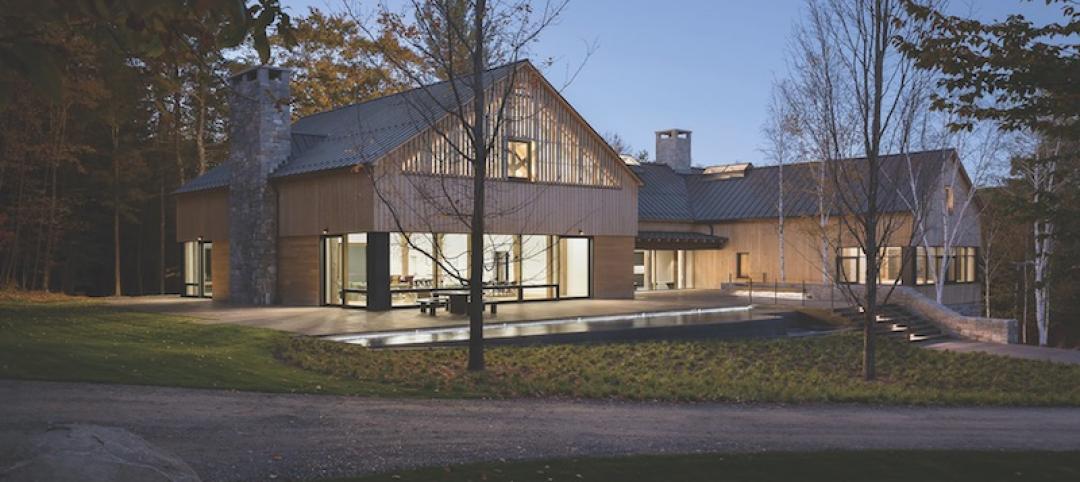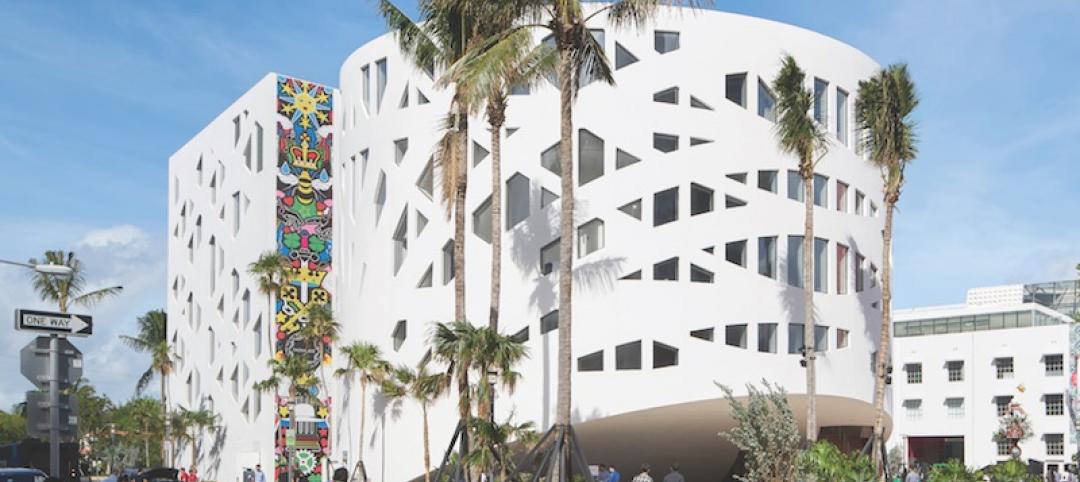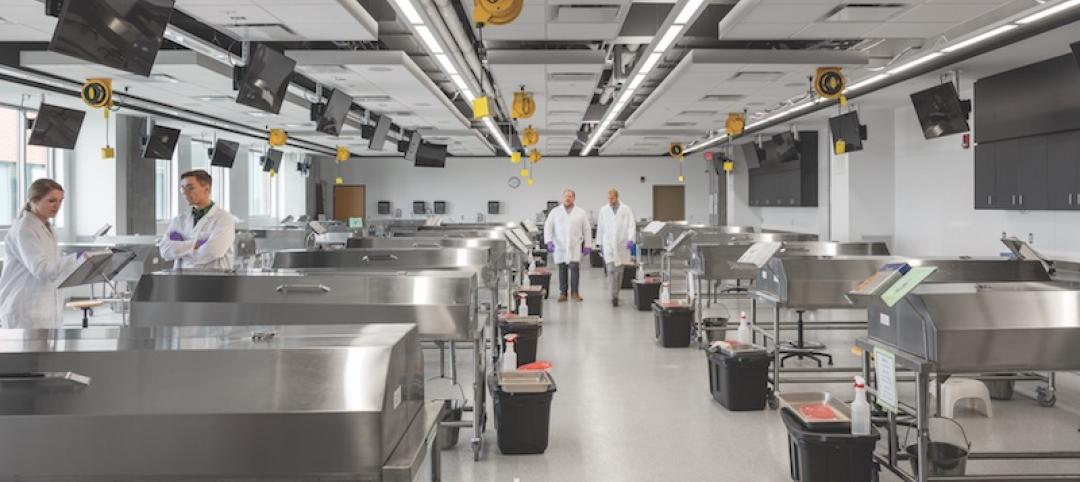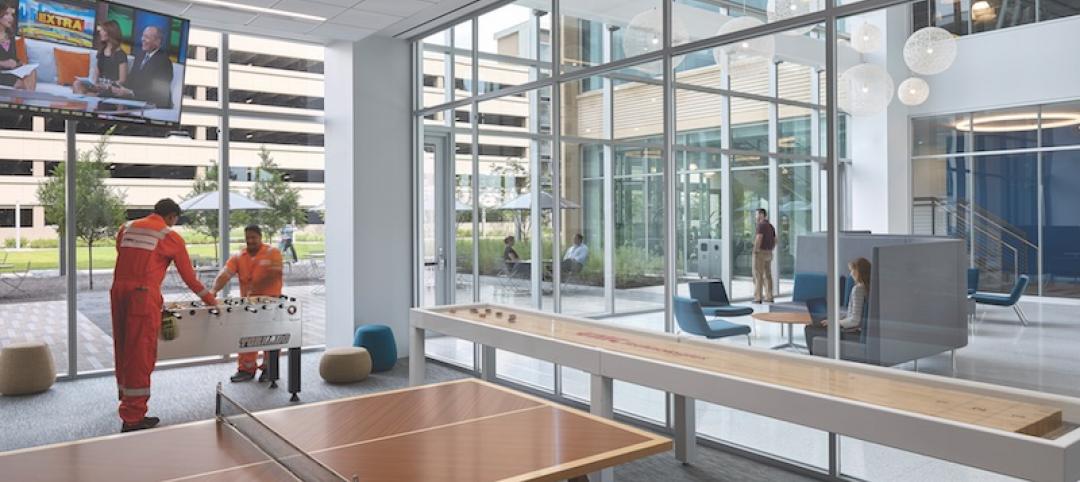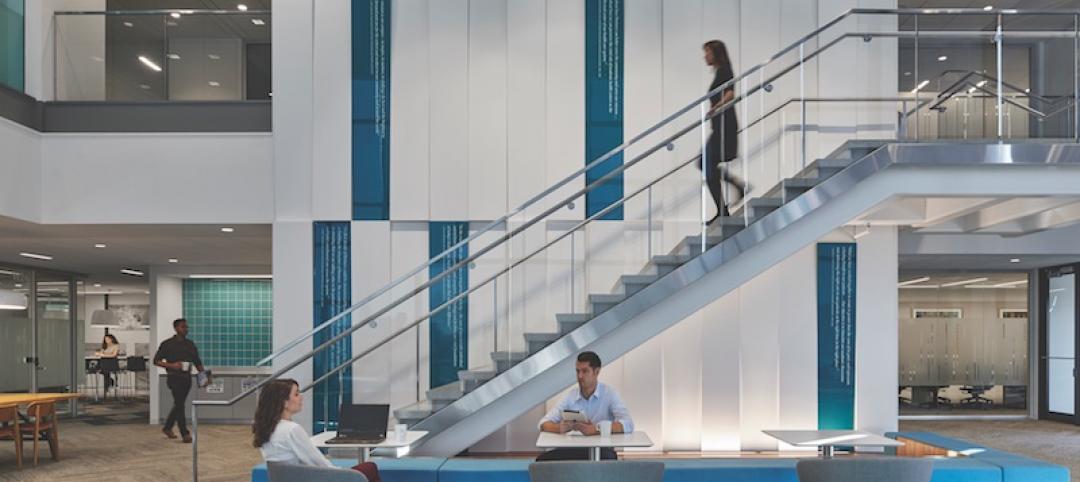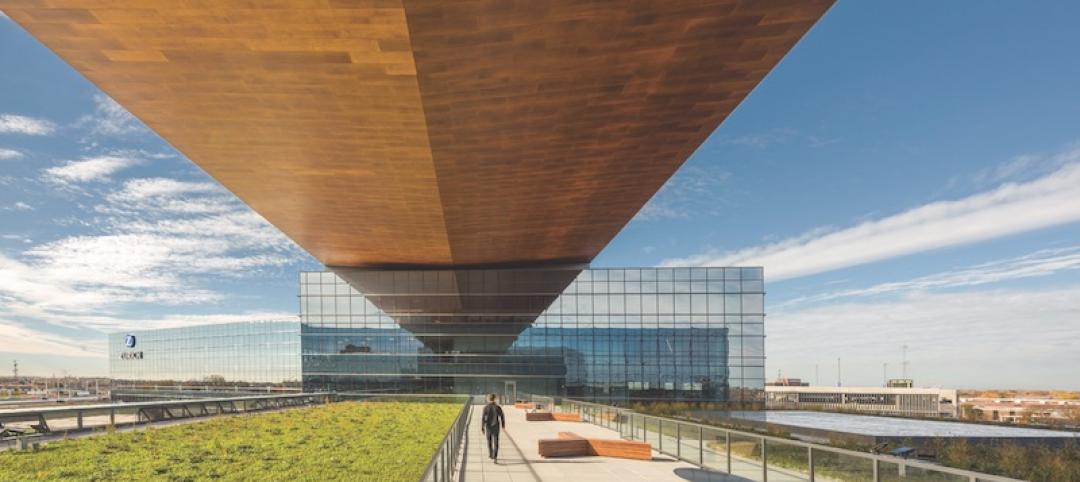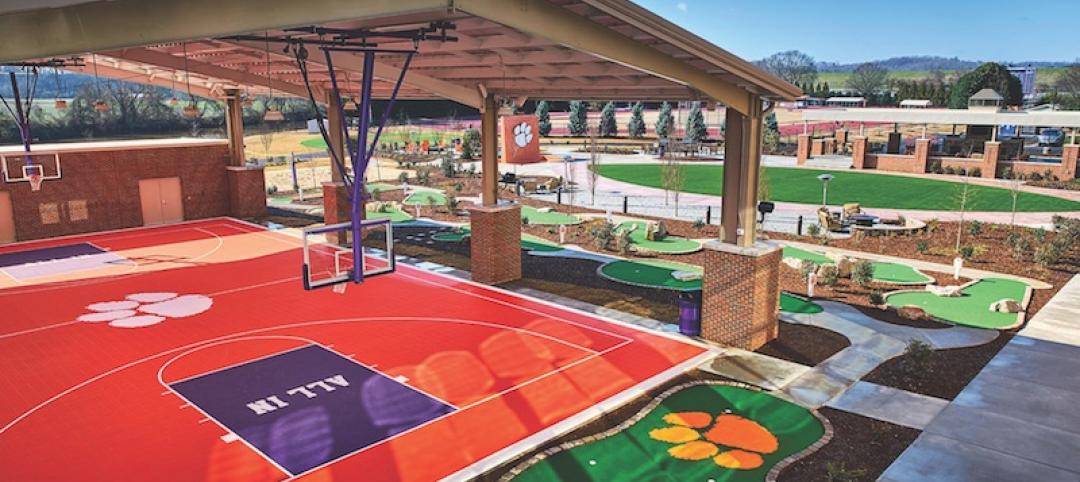A 1.32-acre city block in downtown Houston is now home to a new five-story magnet school. The new Kinder High School replaces a two-story, 63,000-sf building in this city’s eclectic Montrose neighborhood. The original building dated back to the early 1980s but had maxed out its ability to accommodate more students or integrated technologies.
Kinder High School, which can accommodate 750 9th through 12th graders, is one of only three public schools in the U.S. that offer programs for both visual and performing arts. It has six distinct areas of education and training: vocal music, instrumental music, dance, theater, visual arts, and creative writing. The construction of the new school was funded, in part, by the city’s 2012 bond program, supplemented by a $10 million capital campaign and a $7.5 million donation from the Kinder Foundation, a long-time booster of the school, in return for the naming rights.
At one time, the master plan for this project envisioned a 200,000-sf building. But after several working sessions with end-users, the project team found programming overlaps that allowed for a rightsizing of certain spaces without sacrificing elements or functions.
Not surprisingly, a top priority for the project was the integration of audio-visual and acoustical technologies in a building with so many interspersed performance, practice, and learning spaces. For example, the high school has 16 sound isolation practice rooms. Each of the rooms throughout the school is equipped with the latest in technical theater and A/V recording features. Theaters and rehearsal rooms share tech spaces.
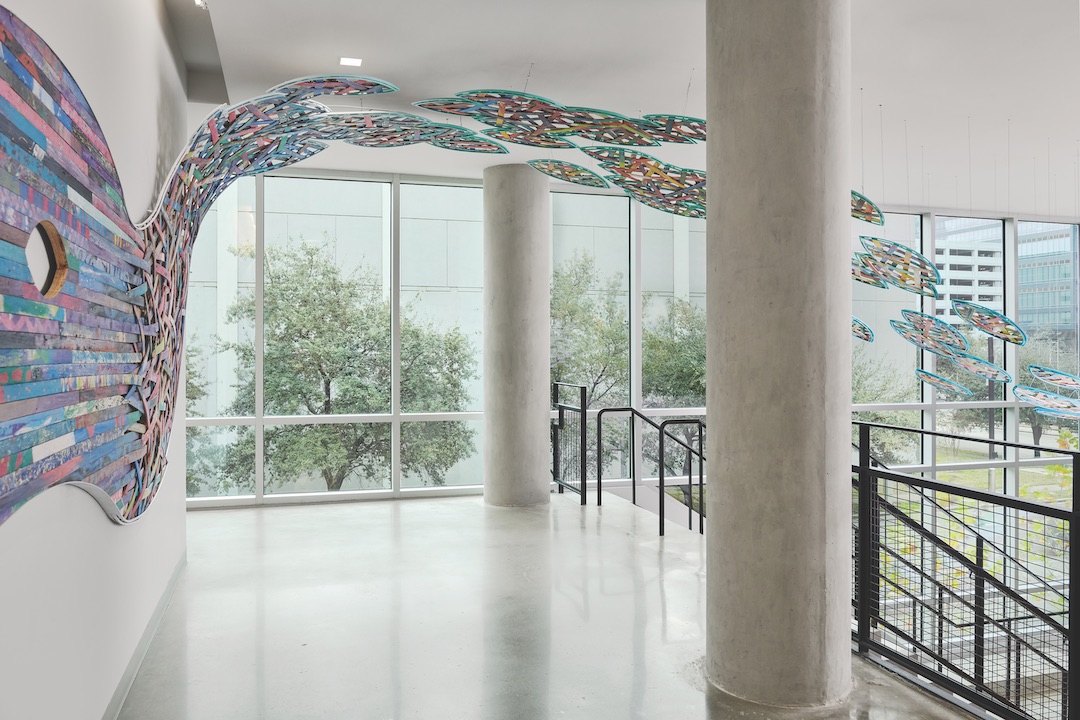 A colorful art installation, commissioned from the studio of an alumnus, runs from the second floor down to the school’s main entrance.
A colorful art installation, commissioned from the studio of an alumnus, runs from the second floor down to the school’s main entrance.
There was also the need to abate noise from a below-ground, two-level parking garage and the city’s METRORail light-rail service, which runs on two sides of the school. One solution that the Building Team came up with was to wrap a “donut” of learning centers and program spaces around the school’s 800-seat Denney Theater auditorium (named after Ruth Denney, the school’s founding director). The theater has adjustable systems of acoustic treatments to support various uses, from theatre to orchestra, choirs, or lecturers.
Denney Theater was one of the areas within the school that the project team prioritized, under budgetary constraints, to determine what quality level of wall system could be installed so that the rooms in question still worked for their users.
The design team also focused on sustainability and the conservation of resources and energy. The building is positioned on its site to optimize daylighting and minimize heating and cooling loads. A new mechanical system improves indoor air quality. Whenever possible materials from the old Montrose campus were reused.
The new high school features a fifth-floor Visual Arts Department with ceramic and sculpture works rooms that provide students with the latest technology to develop their skills. There is a 200-seat black box theater, an outdoor cafeteria on the first floor, and a dance studio with retractable partitions that allow for myriad dance instruction classes to take place simultaneously. Many of the performance spaces throughout the school are designed for multiple purposes.
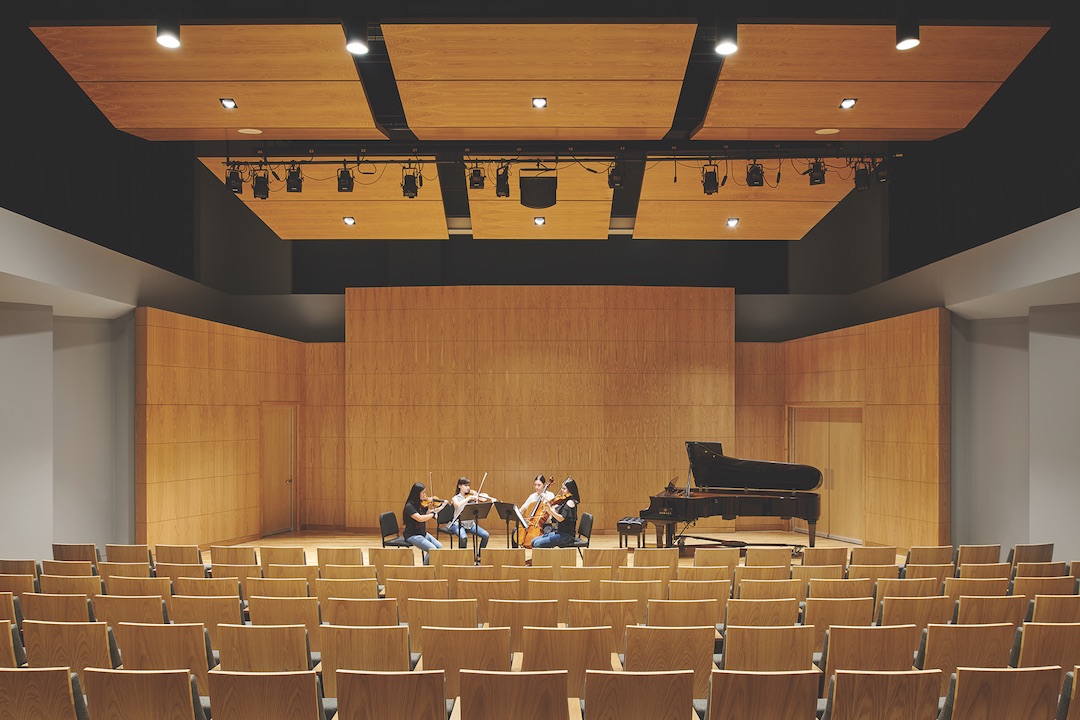 To muffle the noise coming from the building’s underground garage and the light-rail service nearby, learning centers and other programmed spaces were wrapped around the 800-seat Denney Theater.
To muffle the noise coming from the building’s underground garage and the light-rail service nearby, learning centers and other programmed spaces were wrapped around the 800-seat Denney Theater.
The design places a premium on transparency. Double-height volume spaces on the first and fifth floors encourage impromptu student gatherings. The first-floor space features an occupiable stairwell that facilitates social and visual connections.
A colorful art installation—created by alumnus and sculptor Patrick Renner and his company, Flying Carpet Creative—cascades down from the top of this staircase to the school’s first-floor entrance. There are “pops” of color and environmental graphics throughout the building.
Now that it’s located only one light-rail stop from Houston’s Theater District, which itself is part the 10th-largest central business district in the country, Kinder High School for the Performing and Visual Arts, which has operated for 47 years, is even more of “a beacon of creativity” that could spur growth in the area by doubling not only as a place of learning but also as a state-of-the-art performance and arts venue for Houston’s Downtown Arts District.
Building Team — Submitting firm Gensler (architect, AOR), Owner Houston Independent School District, SE Cardno Haynes Whaley, MEP Shah Smith & Associates, GC McCarthy Building Companies, CM Rice & Gardner
General information — Size 168,000 sf, Construction cost $83.2 million, Construction time February 2016 to September 2018, Delivery method CM at risk
Return to the Building Team Awards landing page
Related Stories
Building Team Awards | Jun 14, 2017
3D-printed office: Office of the Future
Dubai kicks off 3D-printing tech initiative with a novel office project.
Building Team Awards | Jun 14, 2017
A space for all: Lighthouse for the Blind and Visually Impaired
Nonprofit HQ fitout improves functionality, accessibility for blind and low-vision individuals.
Building Team Awards | Jun 13, 2017
Government campus reimagined: Intelligence Community Campus
Building Team converts 1940s campus into a sleek, modern home for U.S. intelligence agencies.
Building Team Awards | Jun 13, 2017
Secluded sanctuary: Alnoba leadership training center
Leadership training center becomes New England’s first Passive House building.
Building Team Awards | Jun 12, 2017
Circles and squares: Faena Arts Center
Silver Award: The Faena Arts Center’s forum is divided into two volumes, one a cylinder, the other a cube.
Building Team Awards | Jun 12, 2017
The right prescription: University of North Dakota School of Medicine & Health Sciences
Silver Award: North Dakota builds a new medical/health sciences school to train and retain more physicians.
Building Team Awards | Jun 12, 2017
Texas technopark: TechnipFMC John T. Gremp Campus
Silver Award: TechnipFMC’s new campus marks the start of a massive planned community in north Houston.
Building Team Awards | Jun 8, 2017
Quick turnaround: Partners HealthCare
Silver Award: A 2½-year project brings Partners HealthCare’s sprawling administrative functions under one roof.
Building Team Awards | Jun 8, 2017
Raising the bar: Zurich North American Headquarters
Silver Award: Forgoing a typical center-core design, the Zurich North America Headquarters rises 11 stories across three stacked bars.
Building Team Awards | Jun 8, 2017
Team win: Clemson University Allen N. Reeves Football Operations Complex
Silver Award: Clemson gets a new football operations palace, thanks to its building partners’ ability to improvise.


